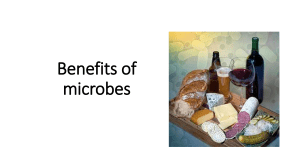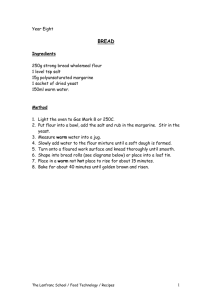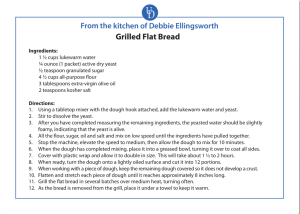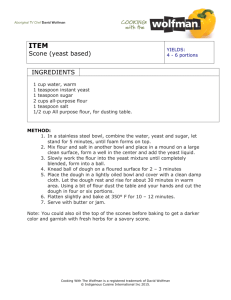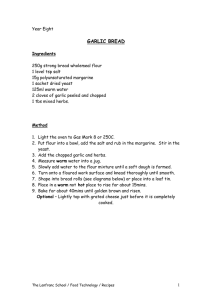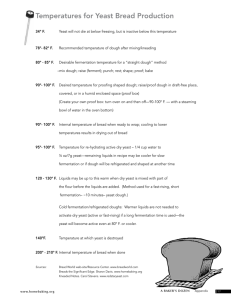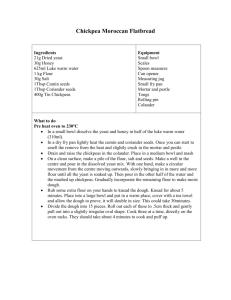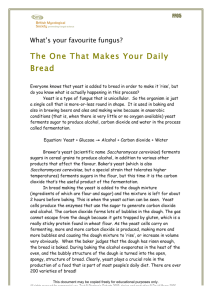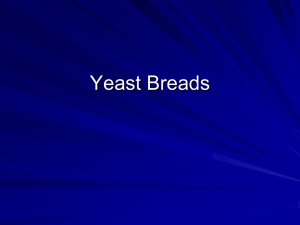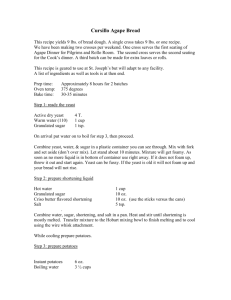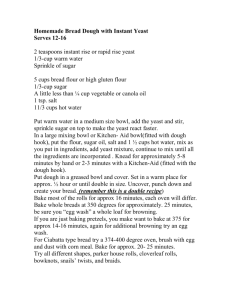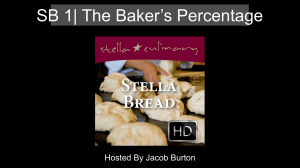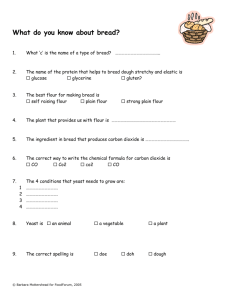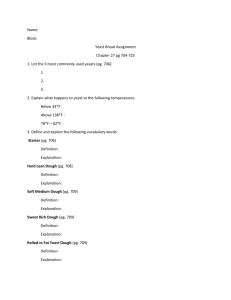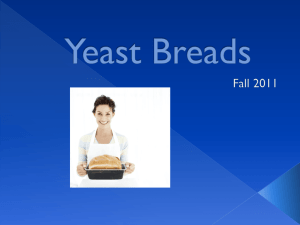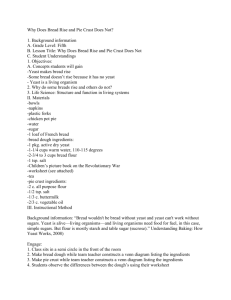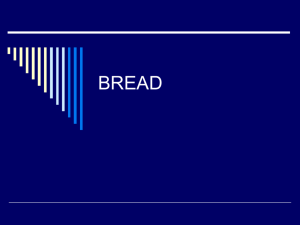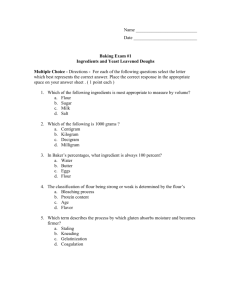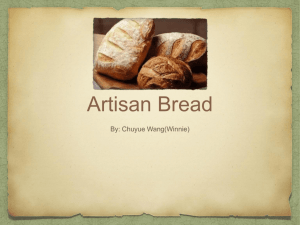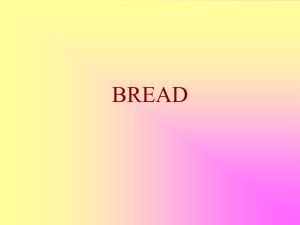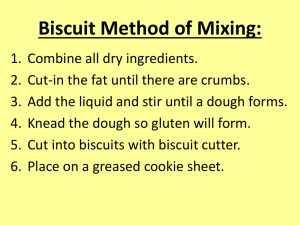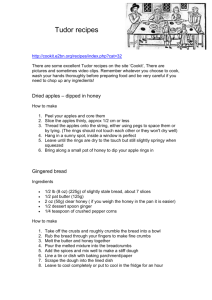Making bread – the facts
advertisement
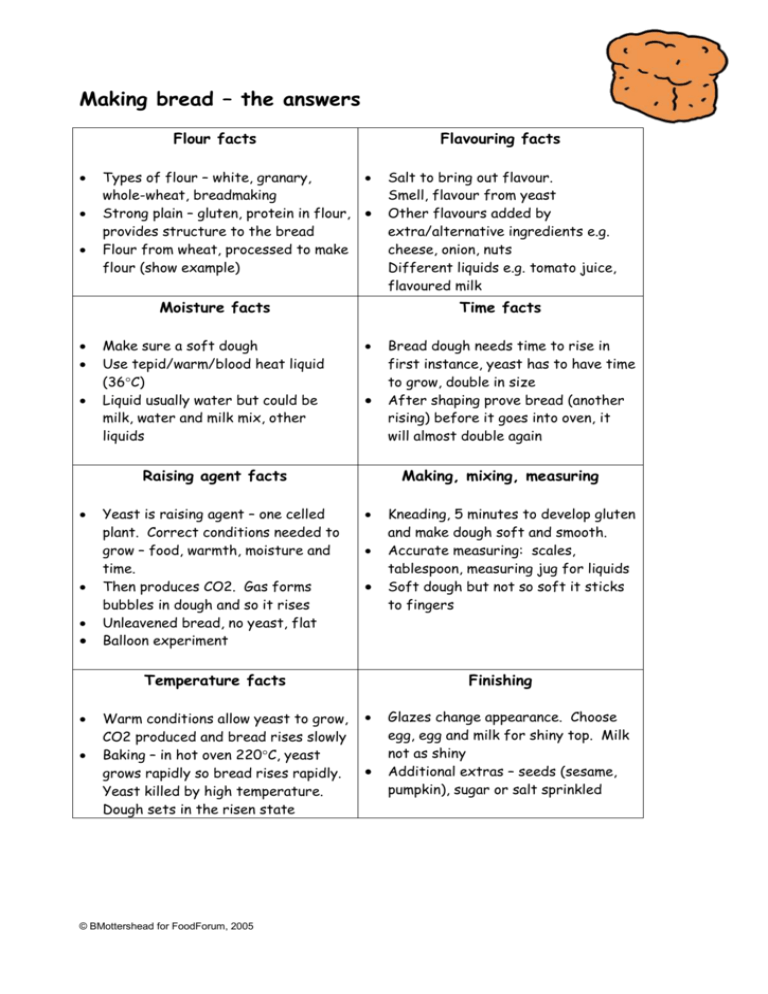
Making bread – the answers Flour facts Flavouring facts Types of flour – white, granary, whole-wheat, breadmaking Strong plain – gluten, protein in flour, provides structure to the bread Flour from wheat, processed to make flour (show example) Moisture facts Make sure a soft dough Use tepid/warm/blood heat liquid (36C) Liquid usually water but could be milk, water and milk mix, other liquids Time facts Raising agent facts Yeast is raising agent – one celled plant. Correct conditions needed to grow – food, warmth, moisture and time. Then produces CO2. Gas forms bubbles in dough and so it rises Unleavened bread, no yeast, flat Balloon experiment Warm conditions allow yeast to grow, CO2 produced and bread rises slowly Baking – in hot oven 220C, yeast grows rapidly so bread rises rapidly. Yeast killed by high temperature. Dough sets in the risen state © BMottershead for FoodForum, 2005 Bread dough needs time to rise in first instance, yeast has to have time to grow, double in size After shaping prove bread (another rising) before it goes into oven, it will almost double again Making, mixing, measuring Temperature facts Salt to bring out flavour. Smell, flavour from yeast Other flavours added by extra/alternative ingredients e.g. cheese, onion, nuts Different liquids e.g. tomato juice, flavoured milk Kneading, 5 minutes to develop gluten and make dough soft and smooth. Accurate measuring: scales, tablespoon, measuring jug for liquids Soft dough but not so soft it sticks to fingers Finishing Glazes change appearance. Choose egg, egg and milk for shiny top. Milk not as shiny Additional extras – seeds (sesame, pumpkin), sugar or salt sprinkled
